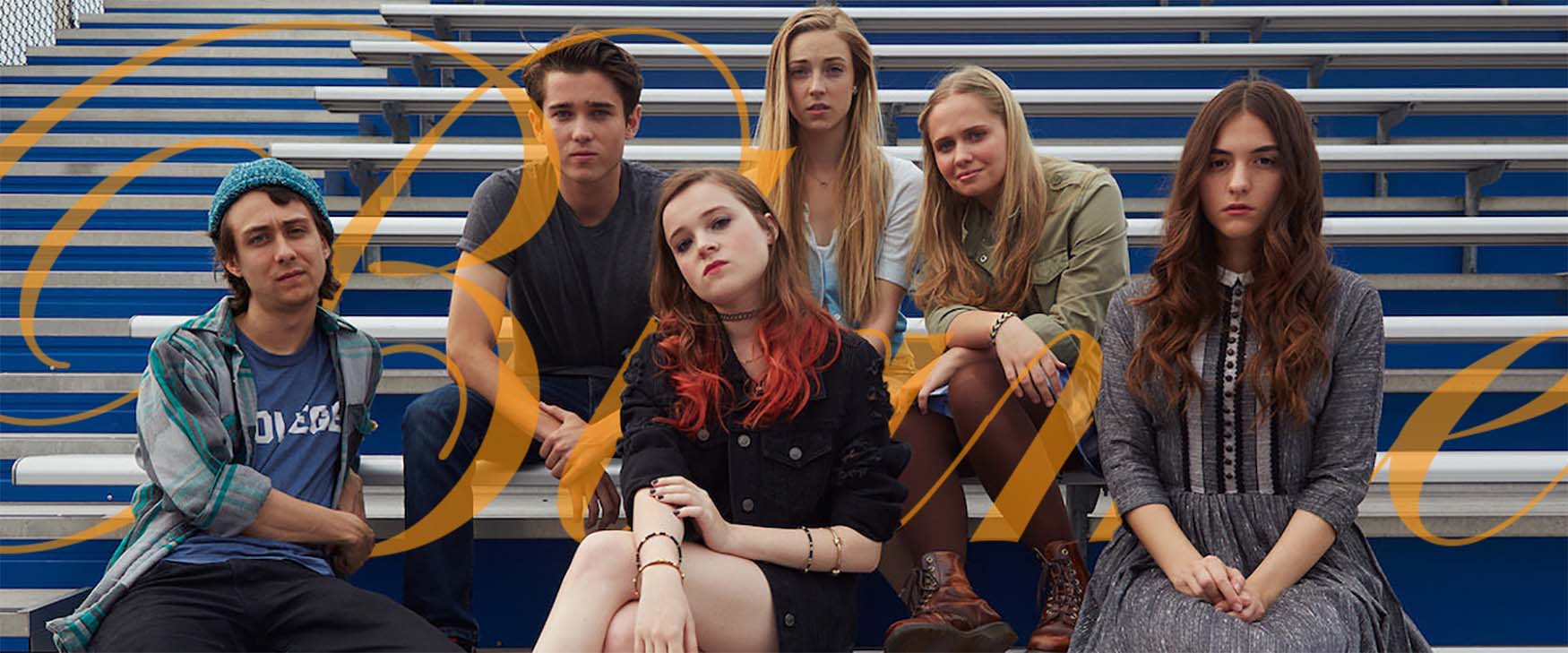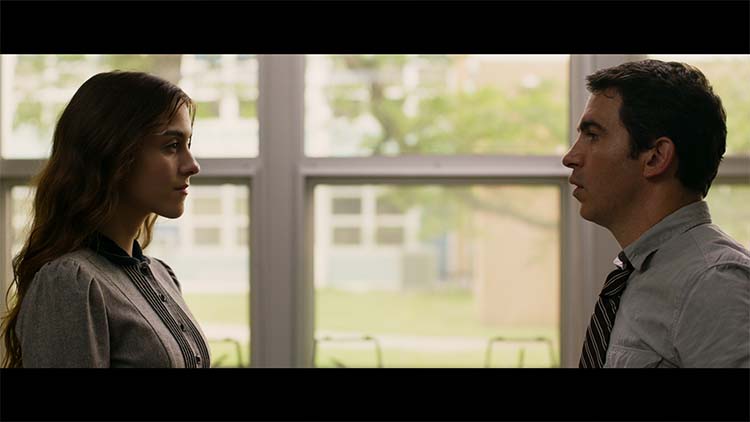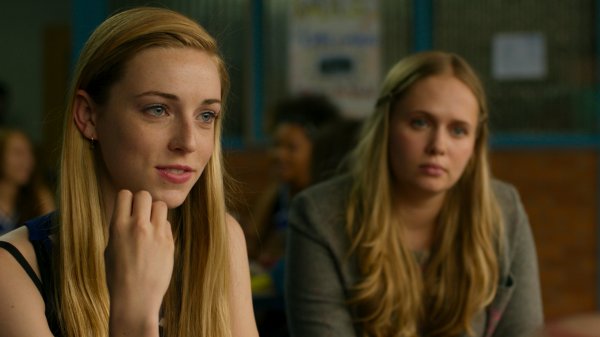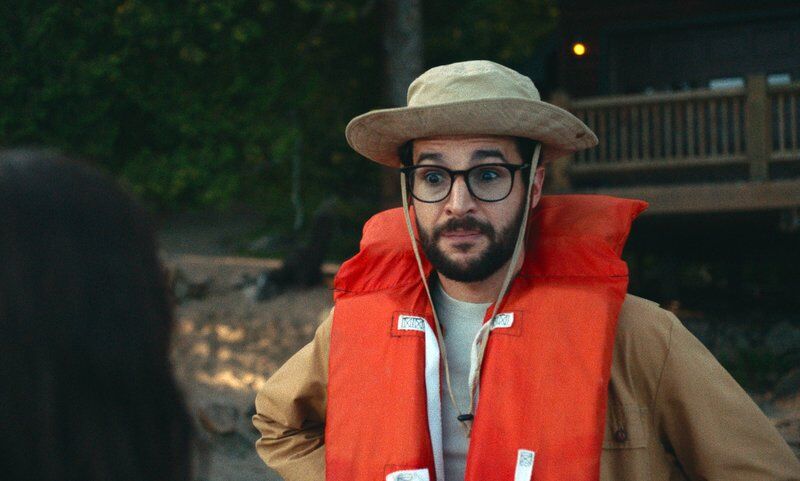The Crucible Meets Mean Girls in New Movie Blame
I almost didn’t even hit play on this one. Another Mean Girls flick? Haven’t we stuck a fork in that tired trope yet? But what hooked me, and tractor beamed me in was the Crucible hook. You see, the movie is about the creation of a play, The Crucible, while, simultaneously, BEING The Crucible simultaneously. I liken it to Moulin Rouge wherein it was about a love story, of the making of a love story, that echoed the love story we were watching. Two things are happening simultaneously, and both inform the other.
But this isn’t Mean Girls. Which, shocked me a little. Yeah, we’ve got all the same archetypal retreads, but these characters are actually fleshed out and we are given back stories for them all. These individuals are complicated and interesting. Never mind the fact that if you base any movie on The Crucible you are guaranteed a blend-o-matic of chaos, accusations, double-backs, and betrayals. And that is pretty much what we’ve got here in Blame. But first, let’s get the important stuff out of the way, if you haven’t seen it yet, feel free to see it here, or here. Heck, there are million places you can catch it. Pick one and watch it pronto.
Blame’s Creator Is More Clever Than You
Quinn Shephard is young. Not to go all Doogie Howser on you or anything… but Quinn, the creator of Blame, started writing the script when she was 15. That is a one, with a proceeding five after it. One Five. Just to be sure you didn’t misunderstand. Sure, she says it was shite at the time. But I still haven’t figured out the simple basics of scriptwriting, and the tags, etc, and I’m 12 times that age. Or something. Math isn’t a strong point either. Anyway, after writing the script, Quinn proceeded to direct her movie, AND act in one of the lead roles for the film too… simultaneously. At the same time. Concurrently even. Let that sink in for a second. Just, between you and me but if she was normal? She should have been baristaing at Starbucks at that age instead of making a movie. I mean, heck, I worked at a local video and pizza store at 20 I think. Hahah.
Yes, there are loose threads to the story. Yes, it isn’t 100% wrapped up and solved for you completely. Yes, I still have questions about Blame at the end of the day. But I take that as a mark of great film making that she isn’t building a Hollywood cookie cutter here. The story is complicated. The characters are complicated. And the Crucible chaos is fantastic. Here, watch some trailer, and see what I mean:
Right? Yeah, it’s a pretty tight little movie. Trust me, you’ll do better with this movie than with the latest Marvel bombastic tripe.
Quick Spoiler Free Blame Overview
The movie starts off with Abigail (Quinn Shephard) returning to her high school after an incident at the school sent her to the psych ward for six months. When she returns, she doesn’t get the warmest of all welcomes, especially from Melissa (Nadia Alexander, who won the Tribeca Film Festival Jury award for her part in Blame) and Sophie (Sarah Mezzanotte), the two students that would come to be her nemeses (nemesi?). Their nemesaic relationship (yeah, I just did that) is cemented when Abigail is selected to play “Abigail” in the student production of The Crucible, and Melissa is selected as Abigail’s understudy. To make matters worse, and extraordinarily sticky, Jeremy (played by Chris Messina) is the new
And as the production commences building steam, with practices and rehearsals, the spiral of chaos between these two just goes from +11 and up. (And this one? This one goes to 11… no, actually it now goes to 100. Who knew?) Melissa uses her control over the other kids of the school to target and ostracize Abigail. But Abigail seems possibly on the edge… maybe she struggles with sort of a Multiple Personality Disorder in a Glass Menagerie sort of a way (Or maybe better said, avoidant personality disorder?) Regardless, sometimes Abigail limps her way through school. Sometimes she’s passive and avoidant. While other times she’s punching lockers and screaming others down. She is a complicated character with more than one particular pathology… that’s for sure. And the various threads and characters boils to a fairly stunning, though divergent, climax. The ending definitely is surprising in the speed of its Crucible like escalation, as well as for its explosive impact on the characters lives.
The Crucible As Leitmotif
I swear to you this is a true story. I remember saying, “Well, that’s an obvious leitmotif that runs through this entire story.” in my Freshman year of college… and having the teacher say, “You have absolutely no idea what that even means.” And I was so confused by his retort that I literally stared at him completely agog. But I promise you Mr. McDaniels I DID KNOW WHAT IT MEANT. It’s a recurrent theme, idea or poetic refrain that echoes throughout a musical or literary composition… and they are generally associated with characters or ideas in order to carry the author’s meaning throughout the work. I HOPE YOU ARE READING THIS NOW MCDANIELS!!!
cough.
Sorry. Where was I? Oh yes. The Crucible as Leitmotif. Some of my favorite movies utilize Shakespeare and other gorgeous plays to backlight their stories. One of my favorite of all time is Ten Things I Hate About You… (So brilliant. “Which of these two do you like the best?” “This one, it makes you look pensive.” “Oh dang, I was going for thoughtful.” Hahahaha.) which is an ode to The Taming of the Shrew. A truly great work of art. Just infuses 10 Things with so much poignancy without having to do any real heavy lifting to say what it is wanting to say. The same is true here with Quinn’s clever references back to her original source material.
If you don’t know the story of The Crucible, it is Arthur Miller’s classic story of the Salem Witch Trials of 1692. It tells the story of how Reverend Parris discovers his daughter Betty and his niece Abigail along with others, dancing in the forest. But when Betty faints at the discovery rumors explode through the community that witchcraft is involved. But Reverend Parris? REVEREND Parris… is a bit nervous about his reputation. So he questions the girls. But they were just dancing… at least that is what they say.
Where Miller starts turning the thumb screws on the characters of The Crucible is that it’s Proctor who is having a complete nervous breakdown with all these goings on. Why? Well, he and Abigail had actually had an affair while she was working for a time in his house. So Abigail tells Proctor there was no witchcraft going on… but of course, you still love me, right Mr. Proctor? Well no, actually, when the pyres are being lit throughout the community, I absolutely do not. hahaha. So Proctor tells Abigail that it’s over. And when Tituba tells everyone it was witchcraft the whole pile of sticks combusts, and the community goes up with it.
There are so many echoes of The Crucible here in Blame. But it is mainly seen in the relationship between Jeremy and Abigail as they prepare for the play. The dance that these two characters play out is really quite amazing for a freshman film. It walked such a tightrope of complicated emotions from both character’s perspectives.
Blame Final Thoughts
I actually reread the Crucible after I saw this movie just to see what Quinn did here. But before I reread it, I wrote down a few thoughts about the play that I could remember. And I mainly wrote down phrases that equated to the swirling chaos that the Salem Witch Trials evoked. Blame, accusations, counter-blame, and repeated accusations, etc. And to see how Quinn Shepherd used her source material and spun out a similar tale of increasing tensions and blame as the plot wound tighter and tighter as it went was pretty incredible. And that Quinn was able to pull it off after only 17 days of shooting after her original funding fell out from under her? Yeah, I could be crushing a little on what Quinn and her mother were able to accomplish with this movie. So yeah, am I giving them a bit of a pass on some of inconsistencies and the dropped threads? Yes, most definitely. And I would argue the story is absolutely better for it.
The Crucible is inspired source material to choose for a story set in a modern high school. We have whisperings of gossip and political infighting. We have accusations and blame wielded like a samurai sword throughout the entire assemblage there in the school. And we have the sexually charged miasma of girls attempting to make an impression on not only their male counterparts, but also their hapless (and somewhat insipid) teachers. Quinn Shephard has given us a marvelous movie that gives us complications where other similar movies has given us comic book characters. And the ending is worth the entire movie enterprise.
I for one hope that Quinn’s has sufficiently earned back her college degree she put on hock in order to make this movie. But I think the world is a better place for it regardless… and I can’t wait to see what she does now with her sophmore debut at the ripe old age of 22.






